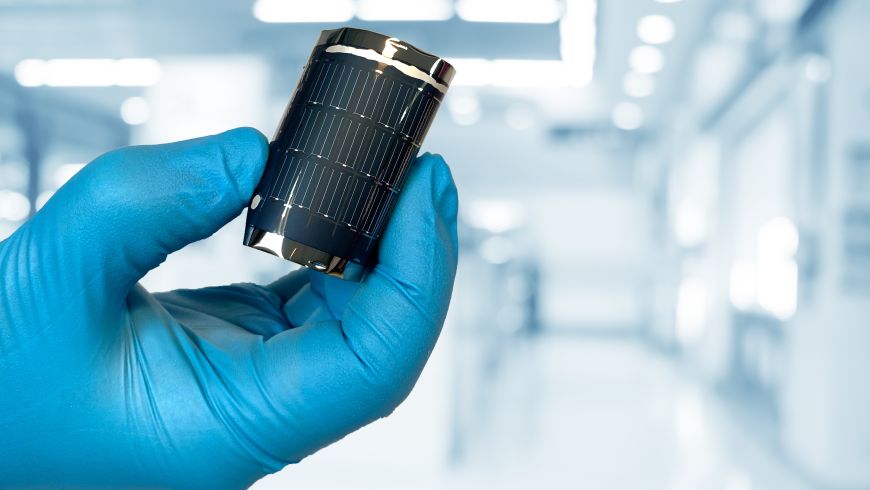Researchers from the Federal Laboratories for Materials Science and Technology (EMPA), in Switzerland, claim to have achieved a world record efficiency of 21.38% for a flexible copper, indium, gallium and selenium (CIGS) solar cell on polyimide plastic film.
The result was confirmed by Germany's Fraunhofer Institute for Solar Energy Systems (Fraunhofer ISE).
The device was fabricated through a low-temperature co-evaporation method for the growth of the light-absorbing CIGS semiconductor thin film. EMPA scientist Shiro Nishiwaki optimized the composition of the layer and alkaline dopants to achieve improved performance.
The researchers analyzed the effects of combined exposure to heat and light and found an increase in photovoltaic performance, which they claim remains stable after several months.
Popular content
The research team that achieved the record efficiency is led by the head of the laboratory for thin films and photovoltaics, Ayodhya Tiwari, who pv magazine interviewed in August, on the future of CIGS technology. “The flexible and lightweight solar modules resulting from this technology are particularly suitable for applications on roofs and facades of buildings, greenhouses, transport vehicles, airships and portable electronic devices,” he said in a statement. “EMPA collaborates with the Swiss company Flisom for the manufacture of flexible and lightweight solar modules by roll-to-roll processes for such applications.”
Japanese manufacturer Solar Frontier has achieved the highest efficiency for a CIGS solar cell to date, at 23.35%, and German thin-film module maker Avancis the highest for a solar panel, at 19.64%.
This content is protected by copyright and may not be reused. If you want to cooperate with us and would like to reuse some of our content, please contact: editors@pv-magazine.com.



By submitting this form you agree to pv magazine using your data for the purposes of publishing your comment.
Your personal data will only be disclosed or otherwise transmitted to third parties for the purposes of spam filtering or if this is necessary for technical maintenance of the website. Any other transfer to third parties will not take place unless this is justified on the basis of applicable data protection regulations or if pv magazine is legally obliged to do so.
You may revoke this consent at any time with effect for the future, in which case your personal data will be deleted immediately. Otherwise, your data will be deleted if pv magazine has processed your request or the purpose of data storage is fulfilled.
Further information on data privacy can be found in our Data Protection Policy.